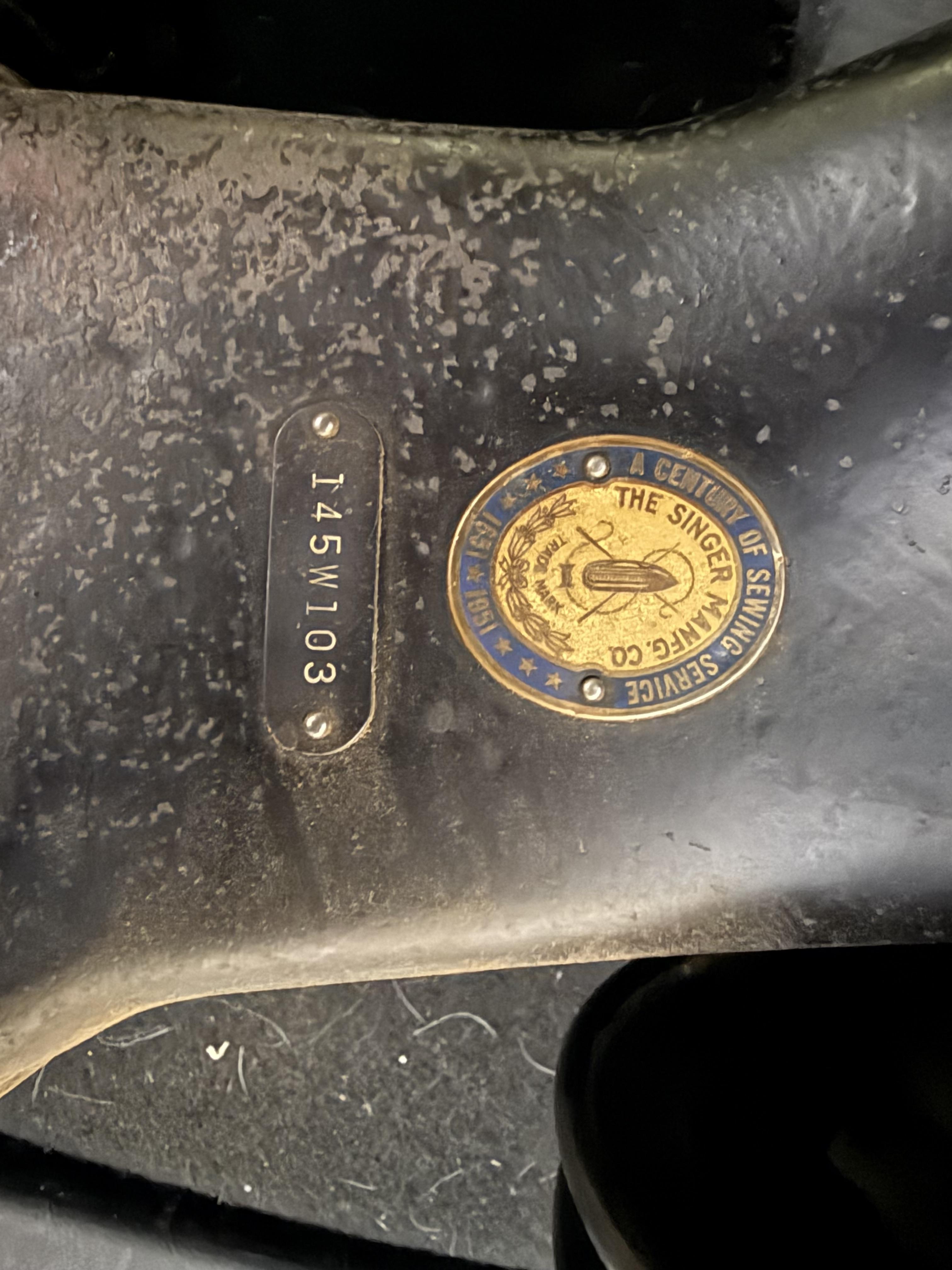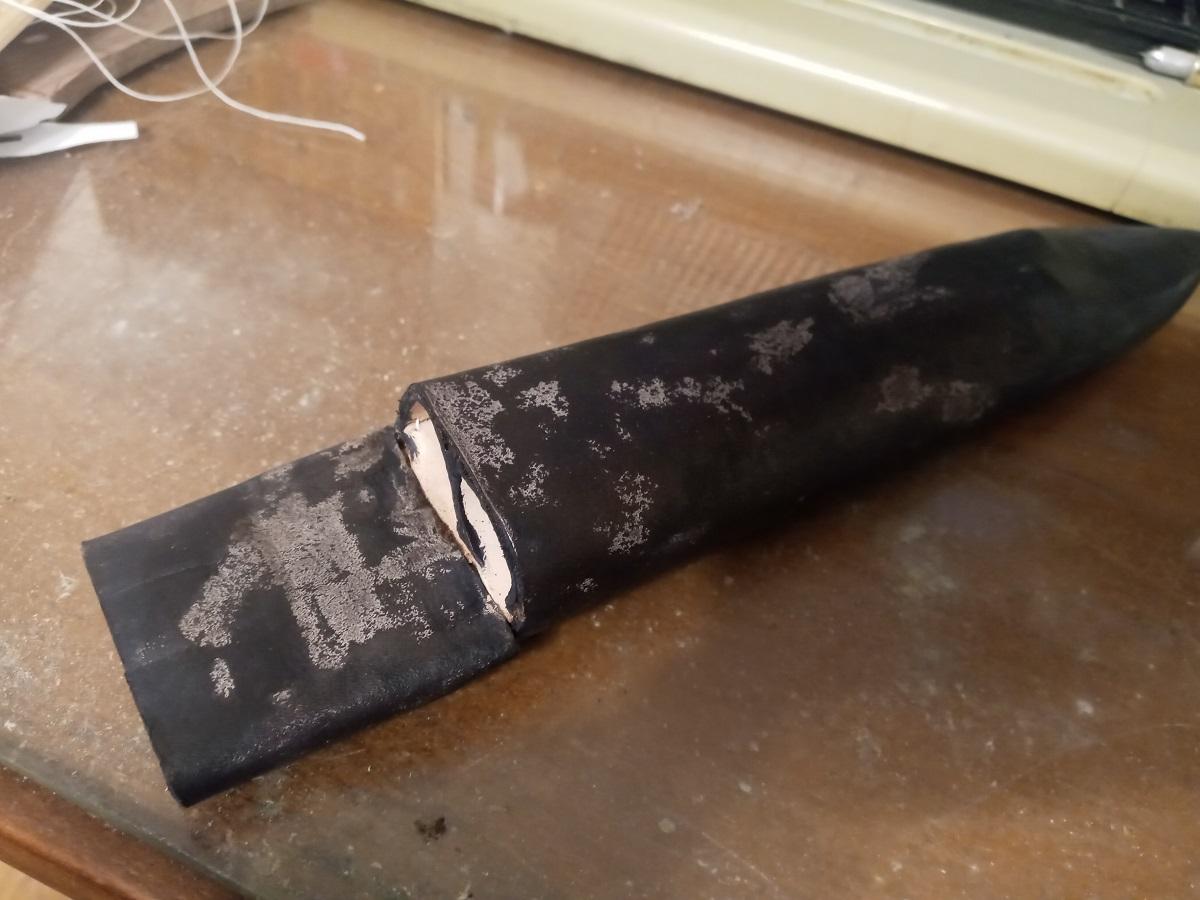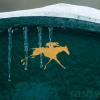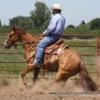All Activity
- Today
-
Jazz_M changed their profile photo
-
Hi everyone, I’m Jazz. I’ve been a designer for years, always playing around with different materials and creative ideas. For a long time, I mostly focused on digital design—but everything shifted when I picked up leatherworking. In the summer of 2024, I lost my beloved 9-year-old bulldog, Fenrir. In trying to hold on to his memory, I handcrafted my first AirTag holder in his likeness. That simple project sparked something deep—LLKworks was born. Since then, I’ve been making small leather goods like AirTag holders, guitar- and violin-inspired key pouches, and pencil sleeves—functional items with a personal story behind each one. I love mixing thoughtful design with tactile leather, and I’m always looking for ways to improve my craft. I joined this forum to learn, share, and connect with fellow makers. Grateful to be here—thanks for having me! More of my work here: llkworks.com
-
AlZilla started following Birkin all sizes pattern
-
@Cumberland Highpower I can get to the site but it has a Cloudflare challenge. Not sure what you're seeing but all 4 of those downloads are 404. The poster hasn't been here in 4 years. Maybe we should consider deleting the post.
-
thevintagerestorer started following Singer 145W103
-
I’m starting to gather up a small collection of machines. Today I found a 145W103 for a price I couldn’t pass. I was wondering what years were these produced and what was their main purpose? The own said it was used in an old school for teaching sewing.
-
Birkin all sizes pattern
Cumberland Highpower replied to LZpattern's topic in Patterns and Templates
Are these patterns for real or are they a Trojan Horse? I clicked on one out of curiosity and I got a popup wanting me to "click allow" to prove I'm human....Sounds awfully suspect to me? -
When you get the Singer 15-90 freed up be aware it is an old domestic drop feed sewing machine. Nether the Singer 15-90 or the Singer 29-k2 are meant to do tack work. The Singer 29K2 was last made around 100 years ago finding parts could be difficult or near impossible to find so you may windup with a boat anchor. I would suggest you read this article about what sewing machine you should be looking at for your needs. Buy Once, Cry Once kgg
-
AlZilla started following Hello from Canada
-
Welcome aboard! Both machines should be fun. Pretty satisfying, un-seizing those great old Singers and making them run again. Most of the time they don't take much. Good luck with it and feel free to share your work.
- Yesterday
-
I have a completely siezed 15-90 and next week am picking up a 29k2. My desire is to sew and repair horse blankets and tack or other random fun projects. I am new to sewing but have been watching this form for 3 months or more and researching all kinds of machines. Looking forward to learning
-
Hello again, I recently constructed a sheath for an antique-style hunting cleaver with a by-knife and fork in side pockets. The main sheath, side pockets and facing are all thin, molded veg-tan, with a small amount of Titebond hide glue to hold the facing in place. This is the first time I've built a sheath like this. I just dyed it this afternoon and found that in certain areas the dye was patchy. I suspect these are areas where the glue either soaked through or got onto the outside. Is this likely to be the problem? If so, is there anything I can do about it at this point? Thanks very much for any advice.
-
-
Dwight started following Hammer Loop Rivots
-
Look on Ebay . . . copper rivets . . . https://www.ebay.com/itm/352511867169?_trkparms=amclksrc%3DITM%26aid%3D1110006%26algo%3DHOMESPLICE.SIM%26ao%3D1%26asc%3D20231107084023%26meid%3D0d1f268ea5e74b5c84712fb55d99b4c2%26pid%3D101875%26rk%3D4%26rkt%3D4%26sd%3D352656754562%26itm%3D352511867169%26pmt%3D1%26noa%3D0%26pg%3D2332490%26algv%3DSimVIDwebV3WithCPCExpansionEmbeddingSearchQuerySemanticBroadMatchSingularityRecallReplaceKnnV4WithVectorDbNsOptHotPlRecallCIICentroidCoviewCPCAuto%26brand%3DUnbranded&_trksid=p2332490.c101875.m1851&itmprp=cksum%3A3525118671690d1f268ea5e74b5c84712fb55d99b4c2|enc%3AAQAKAAABkG96wQ16jds4VFcrhy1F3d4mbwZUJI9Fs%2BgdXYAHIzlX2e3YaNh7x%2BEnKA3G%2BCqSl1Xn4McfcWFK1GytmS2qxJ87mtE8Gm3iR1Ja4WBwh0hNHJrJx3Ki5mp04ow4CO7lP%2BooCybZDDU%2BbbSwmg7CbTin%2BBzBzbCYVnbjvyQAHu6--HI4MB7SvJl5IJqlyvomgoLMlgT6qAJzX0SANJhty2dLNihoUJlF8VqAlqljdRi835uzdT%2FRw2dvDZ%2FKGbQCHYRB14v0kGwE3cSXw%2B2qhe%2B0H%2F1j8myQUlVEX3joNhwh7qOrSJOdzneyRFZuDtxGj41Mo4ttFpvmPdZnY7DNvrzgPZCIDLjXsrwahFpin7FtgWogJyNJJFhlkZOSSgeqjgV%2FE6qC577KxRtf3aqZZ0MdG4rIUuSNO3m0nywm82cOYvXRVnn69oHwxBnnQ0KjnMpyrigJIETey1stdnFqzITxjP1rL6sGbvwarZEpOM1iVBWuTfedF6PWlN7ZXF9L4SBY50J8Wnr10iexzh033FM%3D|ampid%3APL_CLK|clp%3A2332490&itmmeta=01JX5ZZDZP9HHYXS3MDAEYDAG9 Cut a piece of 8 or 10 oz . . . about 7 inches long. Push the ends together . . . . then overlap the top corners . . . and swing the bottom corners of each end up so they are level with the top edge of the loop of leather. Put three rivets in it . . . in a triangle pattern . . . with the point at the top. That is the VERY BEST way to hang a hammer loop off a nail apron. I usually put a 8 or 9 inch piece that goes straight up from the loop we talked about . . . and fold it over the belt . . . with two snaps. it's THE most comfortable and easiest to use May God bless, Dwight
-
AlZilla started following not squashing detailed carving in a stitching pony
-

not squashing detailed carving in a stitching pony
AlZilla replied to LakeOtter's topic in Sewing Leather
Can you sew your small items without a stitching pony? I don't care for them. -
A flea market guy sold me all this hardware this morning for $15. Only wanted the D and O rings. I guess I am caught up on ugly buckles, D and O rings till the end of time. Wondering what the items in the last picture are for?
-
Scoutmom103 started following Singer 29k2 restoration and asking for advice
-
Singer 29k2 restoration and asking for advice
crazymbfarmlady replied to Bosko90's topic in Leather Sewing Machines
Are you still using this machine ? -
crazymbfarmlady joined the community
-
kytim started following Hammer Loop Rivots
-
Does anyone know where I can find the heavy duty robots used to attach a metal hammer loop to the leather?
-
not squashing detailed carving in a stitching pony
BlackDragon replied to LakeOtter's topic in Sewing Leather
The important things are your #1 & #2. Veg tan should be completely dry before clamping for stitching and it shouldn't move while in the clamp. With that said ponies should have something in between the wooden clamps, preferably something softer that the work piece. I use a couple pieces of 3oz English bridle on each side (not glued together). The English bridle will comform to the tooling when snug. When the work piece is in the clamp you don't have to use a lot of pressure to do the stitching, if you are your holes may be to small. Also make sure when you're stiching you aren't pulling the piece so it moves towards you or away from you. The pressure should go to the left and right. -
FrankHester started following not squashing detailed carving in a stitching pony
-
Hello and thanks in advance! I am practicing to make pieces that can be small or narrow (hat patches, hat bands, belt) but that have detailed work including figure or pictorial. You spend hours of time and effort on depth and 3D relief for animals and flora with fine textures etc., you know... But then even master Al Stohlman's "The Art of Hand Stitching Leather" front cover shows a tooled belt clamped right there under the wooden vice grip of a stitching pony. I just feel like it wouldn't take that much pressure to at least slightly compromise certain, painstaking work. People always talk of accidentally, barely nicking or scratching their work with xyz tool. I do not want to even slightly compress the shoulder of a bear or something, and almost considered a Speedy Stitcher, but I want to learn quality-with-efficiency, for an indefinite commitment. And stiches look great even when not needed structurally. Are there any tips you can think of other than: 1) Let the work dry good and hard before clamping into the pony 2) clamp it just tight enough not to shift or wiggle, but do not over-tighten I see some ponies have material buffering the piece from the direct wood jaws; maybe I can try some different rubbers, leathers as a buffer? I thought of felt but maybe it allows movement too much unless too tight....? Any experience or thoughts here are appreciated, Jeff in FL
-
Five years ago I paid an upholsterer a lot of money to re-upholster the seat in my 1979 pickup with blue leather. She bought a whole cow hide that was blue color, and she did a very job. She sewed a big Chevy bowtie on it, and it looked great. But the color has faded a lot, and now it is an ugly greenish color that I don’t like at all. What can I do to change the color of the seat? I would prefer to make it a blue color; but dark grey or black would be okay.
-
Mumu31 joined the community
-
spring flowers and good food
Sheilajeanne replied to chuck123wapati's topic in All About Us and Off Topic
Prayers for your daughter that the surgery goes well! -
mbritt joined the community
-
RockyAussie started following Albeko 83S splitting machine band knife size?
-
Albeko 83S splitting machine band knife size?
RockyAussie replied to snisson's topic in Leather Machinery
Same as the 83K I have. -
Searching with google turns up several methods of "purifying" chicken fat, one of them refers to "degumming" the fat using phosphoric acid and then adding lye to balance the ph and to help form the "soap" that is skimmed off. Most seem to refer to a similar process to making tallow, slow cooking the fat and some say to then add boiling water to separate the gunk for skimming off. I would rather use the process to make tallow as I know that works and it stores indefinitely with no rancidity. Here's a thought, perhaps if you go to your local roast chicken shop I'm sure they'll be happy to give you a few gallons of chicken fat.
-
Don Potter had a reputation as a pretty good maker. I don't know much but there are people in that area who do. One lady we know told me her mother learned to do leatherwork from him in the Livermore/Pleasanton area of California at one time. I don't know when he ended up in Pendleton. At one time he had a fire in his shop and a guy put together a donation deal that several of us sent stuff to get him going again. I think I heard he was working out of the back of an antique store at one time also. I got some of his tools second hand from a guy at the Pendleton Leather Show a few years ago.














